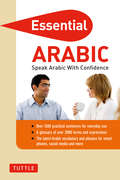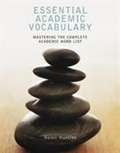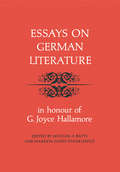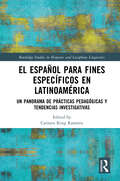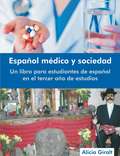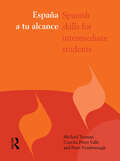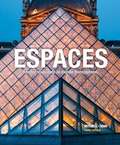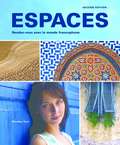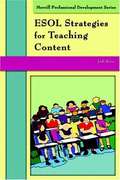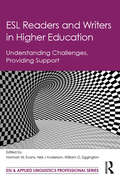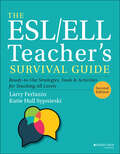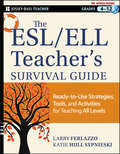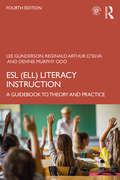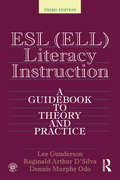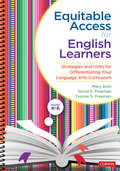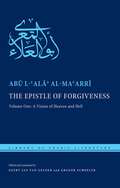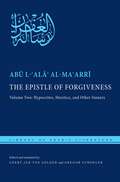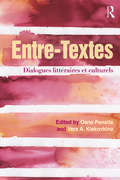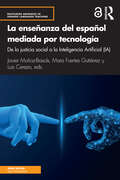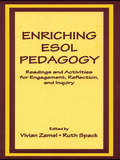- Table View
- List View
Essential Arabic
by Fethi MansouriThis portable, user-friendly Arabic language guide and phrasebook is the easiest and most affordable way to learn Arabic before and during your trip. If you only want one Arabic language book--Essential Arabic is the way to go. Part of Tuttle Publishing's Essential Phrasebooks Series, it is a great first introduction and beginner guide to the language of the Arab world and is also designed as a great Arabic phrasebook, making it the most versatile Arabic language learning tool on the market.Perfect for business people or tourist traveling to the Middle East or for students who want to supplement their learning, this book's easy indexing feature allows it to act as an Arabic phrasebook or as an English-Arabic dictionary. A clever "point to" feature allows you to simply point to a phrase translated in Arabic without the need to say a single word.In this book you will find: Over 1500 practical sentences for everyday use. A glossary of over 200 terms and expressions. Extensive information about Arabic grammar and pronunciation. Latest Arabic vocabulary and Arabic phrases for smart phones, social media and more.
Essential Academic Vocabulary: Mastering The Complete Academic Word List
by Helen HuntleyEssential Academic Vocabulary prepares students for academic success by helping them preview, learn, and practice vocabulary from the Academic Word List in context. Engaging academic readings highlight chapter vocabulary in context. From chapter to chapter, the readings and vocabulary increase in complexity level, allowing students to establish and build upon a solid vocabulary foundation.
Essays on German Literature: In Honour of G. Joyce Hallamore
by Michael S. Batts Marketa Goetz StankiewiczThe present Festschrift serves a dual purpose: firstly, to honour Professor Joyce Hallamore for her contribution to German studies in Canada, particularly at the University of British Columbia; secondly, to document the flourishing state of German studies in this country. Former and present students of Professor Hallamore were asked to contribute essays from their varied fields of interest which she has stimulated and fostered; furthermore, colleagues across Canada were invited to contribute the results of their research: the broad theme of this second group of essays is the complex relationship between nineteenth and twentieth century literature which has been the centre of Professor Hallamore's own scholarly work.<P><P> This volume commemorates Professor Hallamore's forty years of scholarship and teaching--the time given by her to the University of British Columbia, not only to the formation and growth of the Department of German (which she has headed for some twenty years) but to the expansion of the University as a whole. It demonstrates at the same time through breadth and variety the coming of age of German studies in Canada, which Professor Hallamore has fostered.<P>Although the essays in this volume vary in approach, the result shows a remarkable harmony of outlook, which gives evidence of the authors' conscious effort to reconsider critically traditional categories and attitudes in literary criticism. This harmony of outlook--found in the whole range of papers from the youngest to the most mature scholar--reflects the spirit and work of the person whom the volume is honouring.
Espanol Santillana, High School 1
by Lori Langer de Ramirez Miguel Santana Eduardo FernNIMAC-sourced textbook
El español para fines específicos en Latinoamérica: Un panorama de prácticas pedagógicas y tendencias investigativas (Routledge Studies in Hispanic and Lusophone Linguistics)
by Carmen King RamírezEl español para fines específicos en Latinoamérica: un panorama de prácticas pedagógicas y tendencias investigativas es el primer libro en ofrecer un panorama de investigaciones que se están realizando sobre el campo de español para fines específicos (EFE) en esta región. Está conformado por dos partes, las cuales ofrecen aproximaciones al español para fines académicos y el español para fines laborales con un énfasis en prácticas pedagógicas para el aula. El volumen se compone de estudios realizados por académicos de siete países latinoamericanos (Chile, Costa Rica, Cuba, Brasil, Guatemala, México y Perú) y explora temáticas relevantes para la enseñanza del español en los distintos contextos representados. Por medio de los estudios presentados por los autores, El español para fines específicos en Latinoamérica: un panorama de prácticas pedagógicas y tendencias investigativas pone de relieve cómo el campo de EFE puede responder a necesidades pedagógicas que se observan en Latinoamérica al incorporar nuevos acercamientos al campo de la lingüística aplicada.Este libro es de interés para investigadores y docentes en las áreas de la enseñanza de lenguas, el español para fines específicas y la lingüística aplicada.El español para fines específicos en Latinoamérica is the first book to bring together the various lines of research being carried out on teaching Spanish for Specific Purposes (SSP) across Latin America.Divided into two parts, the book offers invaluable research into Spanish for academia and Spanish for professional purposes in Latin America with a particular focus on pedagogical practices for university classrooms. Comprised of studies by scholars from seven different Latin American countries (Chile, Costa Rica, Cuba, Brazil, Guatemala, Mexico and Peru), this volume explores themes individual to the region and concerns relevant to the teaching of Spanish in these environments. Through these studies, El español para fines específicos en Latinoamérica illustrates how the field of SSP can respond to specific needs within Latin America by exploring issues specific to the region through exploring different approaches to the field of applied linguistics.This unique volume will be of interest to researchers in the areas of Spanish language pedagogy, Spanish for Specific Purposes, and applied linguistics.
Espanol medico y sociedad: Un libro para estudiantes de espanol en el tercer ano de estudios (Revised Edition)
by Alicia GiraltEspanol medico y sociedad/ Medical Spanish and Society is an innovative textbook that fulfills the needs of upper-division Spanish students who are pursuing degrees in the health professions, plan to become medical interpreters or just want to improve their proficiency in the language. It provides multiple opportunities to learn vocabulary related to the medical field, reviews hard-to-understand grammatical concepts, describes health-related cultural competence and presents opportunities to discuss issues of concern about the health of Hispanic communities in the US and abroad.
El español de los Estados Unidos
by Anna María Escobar Kim PotowskiHow long has Spanish been spoken in the US and how many people speak it today? Is Spanish being passed down through generations? What role does Spanish play in US Latino identity? Analysing and synthesising data from a wide variety of sources, Escobar and Potowski explore these questions and more in this up-to-date textbook for students of Spanish language, linguistics, bilingualism, sociolinguistics, culture, and history. • Over 150 exercises help students engage with the linguistic characteristics of Spanish, Spanish-dialect contact, bilingualism, and Spanish communities in the US • Exercises and examples refer students to external, online sources so they can experience Spanish through a range of media • Concepts are clearly defined with detailed examples for readers who may not have a background in linguistics • Misconceptions about Spanish varieties and Latino communities are addressed, ensuring readers will emerge with a clear understanding of how Latino communities vary linguistically and socioculturally. Linguistic concepts are clearly defined, and more complex concepts include detailed examples and exercises. Each chapter contains exercises which help readers to understand and reflect on new material. Chapter exercises direct readers to online resources so they can experience authentic examples.
España a tu alcance: Spanish Skills for Intermediate Students
by Peter Furnborough Concha Pérez Valle Michael TrumanEspaña a tu alcance provides intermediate students with a genuine insight into Spanish culture via a range of practical activities and exercises. The course includes many unscripted recordings of interviews with Spaniards from a variety of geographical areas. Students explore these recordings through activities designed to develop listening, speaking, reading and writing skills.This course suitable for classroom use or independent learning.
Espaces: Rendez-vous avec le monde francophone
by James G. Mitchell Cheryl TanoNIMAC-sourced textbook
Espaces: Rendez-vous avec le monde francophone
by Cherie Mitschke Cheryl TanoNIMAC-sourced textbook
ESOL Strategies for Teaching Content
by Jodi ReissThis book is designed for teachers of math, science, and social studies in grades 3 through 12 who seek ways to reach and teach the English language learners in their classrooms. It is filled with detailed advice, sugggestions, and guidelines of a very practical and applied nature for teachers who would like to learn what they need to know and do.
ESL Readers and Writers in Higher Education: Understanding Challenges, Providing Support (ESL & Applied Linguistics Professional Series)
by Norman W. Evans Neil J Anderson William G. EggingtonESL Readers and Writers in Higher Education describes the challenges ESL students in U.S. postsecondary institutions face when studying in a second language, and offers suggestions for how teachers, advisors, tutors, and institutions might provide support that meets the reading and writing needs of this very important student population. Because the ESL profession as a whole, including what professionals are doing in the classroom, sits under the umbrella of an institutional response to a language-related challenge, some solutions aimed at helping students achieve optimal proficiency lie outside of the classroom. As such, this book is based on the assertion that language development support is not the sole responsibility of language teachers. Everyone on campuses that hosts ESL students bears some responsibility for these students' language development. Chapters are therefore, intentionally adapted to appeal to a wide variety of readers from classroom teachers, and teachers in training, to admissions officers, academic advisors, and international student advisors.
ESL : Plus de choses à savoir sur l'anglais
by Kenneth D. BostianUn livre très utile pour les apprenants d'anglais, qu'ils soient étudiants ou enseignants. Ce livre couvre de nombreuses parties de l'anglais qui ne sont pas abordées en classe. Il comprend des contractions, des liens entre les mots, des réductions, l'utilisation de dictionnaires et bien plus encore !
The ESL/ELL Teacher's Survival Guide: Ready-to-Use Strategies, Tools, and Activities for Teaching All Levels (J-b Ed: Survival Guides #175)
by Larry Ferlazzo Katie Hull SypnieskiMaximize the educational potential of your ESL/ELL class with this singular resource The ESL/ELL Teacher's Survival Guide: Ready-to-Use Strategies, Tools, and Activities for Teaching English Language Learners of All Levels, 2nd Edition offers readers a comprehensive range of instructional strategies and educational resources for teaching English. The newly revised 2nd Edition includes brand new chapters on: • Working with Long-Term English Language Learners • Teaching English internationally • Teaching Elementary Age ELLs • Teaching Adult ELLs • Teaching ELLs with learning challenges • Culturally Responsive Instruction • Effective online instruction • Working with co-teachers and para-professionals In addition to the new chapters, The ESL/ELL Teacher's Survival Guide contains updated material on topics including math, science, social studies, Common Core Standards, the Next Generation Science Standards and 150 pages of new, highly engaging content. An essential resource for anyone involved in teaching English as a Second Language to students of all ages, this book is perfect for general education teachers and ESL specialists for students in grades six through twelve. It’s also highly instructive for teachers of adult ESL classes, elementary and teacher educators, and resource specialists.
The ESL / ELL Teacher's Survival Guide
by Larry Ferlazzo Katie Hull SypnieskiA much-needed resource for teaching English to all learners The number of English language learners in U. S. schools is projected to grow to twenty-five percent by 2025. Most teachers have English learners in their classrooms, from kindergarten through college. The ESL/ELL Teacher?s Survival Guide offers educators practical strategies for setting up an ESL-friendly classroom, motivating and interacting with students, communicating with parents of English learners, and navigating the challenges inherent in teaching ESL students. Provides research-based instructional techniques which have proven effective with English learners at all proficiency levels Offers thematic units complete with reproducible forms and worksheets, sample lesson plans, and sample student assignments The book?s ESL lessons connect to core standards and technology applications This hands-on resource will give all teachers at all levels the information they need to be effective ESL instructors.
ESL (ELL) Literacy Instruction: A Guidebook to Theory and Practice
by Lee Gunderson Reginald Arthur D'Silva Dennis Murphy OdoNow in its fourth edition, ESL (ELL) Literacy Instruction combines a comprehensive scope with practical, research-based tools and applications for reading instruction. Designed for use by pre-service and in-service teachers, this guidebook provides the context and expertise to plan and implement reading programs that match the needs and abilities of students at all ages and levels of proficiency. The book explains different models of literacy instruction from systematic phonics to whole language instruction, discusses controversies in the field, and includes specific teaching methods within each model. The fourth edition highlights recent developments in education policy, new models of instruction, and devotes greater attention to issues surrounding assessment. An expanded companion website integrates with the text to offer additional tools and examples, and readers are encouraged to develop their own teaching strategies within their own instructional models. Providing a thorough overview of the history and major issues of ESL (ELL) literacy instruction, this book will be of great interest to pre-service and in-service teachers at all levels, from kindergarten to adult learners.
ESL (ELL) Literacy Instruction: A Guidebook to Theory and Practice
by Lee Gunderson Dennis Murphy Odo Reginald D'SilvaESL (ELL) Literacy Instruction provides both ESL and mainstream teachers with the background and expertise necessary to plan and implement reading programs that match the particular needs and abilities of their students. Comprehensive and research-based, it applies current ESL and reading research and theory to practice. Designed for use by pre-service and in-service teachers at all levels from kindergarten to adult learners, it explains different models of literacy instruction from systematic phonics to whole language instruction and includes specific teaching methods within each model. Multicultural issues are addressed. Instructional matrices that account for the wide variations in ESL (ELL) student backgrounds and abilities form the pedagogical basis of the approach described in the text. The matrices, based on extensive research, involve two easily measured variables that predict what programs and approaches will be comprehensible for learners who vary in age, literacy background, English ability, and program needs. Readers are encouraged to develop their own teaching strategies within their own instructional models.
Equitable Access for English Learners, Grades K-6: Strategies and Units for Differentiating Your Language Arts Curriculum
by Yvonne S. Freeman David E. Freeman Mary SotoPlain and simple: until our English learners have equitable access to the curriculum, they’ll continue to struggle with subject area content. And if you’re relying on add-on’s to fit in from your language arts basal or a supplementary program, Mary Soto, David Freeman, and Yvonne Freeman are here to equip you with much more effective, efficient, and engaging strategies for helping your English learners read and write at grade level. One assurance right from the start: Mary, David, and Yvonne are not suggesting you reinvent your curriculum. Instead, Equitable Access for English Learners, Grades K-6, focuses on how to fortify foundational practices already in place. First, you’ll learn more about the Equitable Access Approach, then it’s time to dive into the book’s four units of study. Drawing on each unit’s many strategies, you’ll discover how to apply them to any unit in your own language arts curriculum and start differentiating: How to draft and implement language objectives to help English learners meet academic content standards How to make instructional input comprehensible, including translanguaging strategies that draw on your students’ first languages when you don’t know how to speak them How to utilize the characteristics of text to support readers, along with a rubric for determining a text’s cultural relevance How to build students’ academic content knowledge and develop academic language proficiency Each unit addresses a commonly taught topic in today’s language arts programs and comes with ready-to-go review and preview activities, key strategies, grade-level adaptations, reflection exercises, and printable online resources. Taken as a whole, they constitute an all-new approach for providing that equitable and excellent access our English learners so rightfully deserve. "When you adopt our Equitable Access Approach, your students will not only thrive, they’ll also find your language arts curriculum much more meaningful and engaging." —Mary Soto, David E. Freeman, and Yvonne S. Freeman
Equitable Access for English Learners, Grades K-6: Strategies and Units for Differentiating Your Language Arts Curriculum
by Yvonne S. Freeman David E. Freeman Mary SotoPlain and simple: until our English learners have equitable access to the curriculum, they’ll continue to struggle with subject area content. And if you’re relying on add-on’s to fit in from your language arts basal or a supplementary program, Mary Soto, David Freeman, and Yvonne Freeman are here to equip you with much more effective, efficient, and engaging strategies for helping your English learners read and write at grade level. One assurance right from the start: Mary, David, and Yvonne are not suggesting you reinvent your curriculum. Instead, Equitable Access for English Learners, Grades K-6, focuses on how to fortify foundational practices already in place. First, you’ll learn more about the Equitable Access Approach, then it’s time to dive into the book’s four units of study. Drawing on each unit’s many strategies, you’ll discover how to apply them to any unit in your own language arts curriculum and start differentiating: How to draft and implement language objectives to help English learners meet academic content standards How to make instructional input comprehensible, including translanguaging strategies that draw on your students’ first languages when you don’t know how to speak them How to utilize the characteristics of text to support readers, along with a rubric for determining a text’s cultural relevance How to build students’ academic content knowledge and develop academic language proficiency Each unit addresses a commonly taught topic in today’s language arts programs and comes with ready-to-go review and preview activities, key strategies, grade-level adaptations, reflection exercises, and printable online resources. Taken as a whole, they constitute an all-new approach for providing that equitable and excellent access our English learners so rightfully deserve. "When you adopt our Equitable Access Approach, your students will not only thrive, they’ll also find your language arts curriculum much more meaningful and engaging." —Mary Soto, David E. Freeman, and Yvonne S. Freeman
The Epistle of Forgiveness: A Vision of Heaven and Hell (Library of Arabic Literature #32)
by Geert Jan Van Gelder Gregor Schoeler Abu l-Ala al-MaarriOne of the most unusual books in classical Arabic literature, The Epistle of Forgiveness is the lengthy reply by the prolific Syrian poet and prose writer Abu l-ʿAlaʾ al-Maʿarri (d. 449 H/1057 AD), to a letter written by an obscure grammarian, Ibn al-Qarih. With biting irony, The Epistle of Forgiveness mocks Ibn al-Qarih's hypocrisy and sycophancy by imagining he has died and arrived with some difficulty in Heaven, where he meets famous poets and philologists from the past. He also glimpses Hell, and converses with the Devil and various heretics. Al-Maʿarri—a maverick, a vegan, and often branded a heretic himself—seems to mock popular ideas about the Hereafter. This book, the first of two volumes, includes Ibn al-Qarih’s initial letter to al-Maʿarri, as well as the first half of The Epistle of Forgiveness.<P><P> This translation is the first complete translation in any language and retains the many digressions, difficult passages, and convoluted grammatical discussions of the original typically omitted in other translations. It is accompanied by a comprehensive introduction and detailed annotation. Replete with erudite commentary, amusing anecdotes, and sardonic wit, The Epistle of Forgiveness is an imaginative tour-de-force by one of the most pre-eminent figures in classical Arabic literature.
The Epistle of Forgiveness: Hypocrites, Heretics, and Other Sinners (Library of Arabic Literature #36)
by Geert Jan Van Gelder Gregor Schoeler Abu l-Ala al-MaarriOne of the most unusual books in classical Arabic literature, The Epistle of Forgiveness is the lengthy reply by the prolific Syrian poet and prose writer Abu l-ʿAlaʾ al-Maʿarri (d. 449 H/1057 AD), to a letter written by an obscure grammarian, Ibn al-Qarih. With biting irony, The Epistle of Forgiveness mocks Ibn al-Qarih's hypocrisy and sycophancy by imagining he has died and arrived with some difficulty in Heaven, where he meets famous poets and philologists from the past. He also glimpses Hell, and converses with the Devil and various heretics. Al-Maʿarri—a maverick, a vegan, and often branded a heretic himself—seems to mock popular ideas about the Hereafter. This book, the first of two volumes, includes Ibn al-Qarih’s initial letter to al-Maʿarri, as well as the first half of The Epistle of Forgiveness.<P><P> This translation is the first complete translation in any language and retains the many digressions, difficult passages, and convoluted grammatical discussions of the original typically omitted in other translations. It is accompanied by a comprehensive introduction and detailed annotation. Replete with erudite commentary, amusing anecdotes, and sardonic wit, The Epistle of Forgiveness is an imaginative tour-de-force by one of the most pre-eminent figures in classical Arabic literature.
Entre-Textes: Dialogues littéraires et culturels
by Oana Panaïté Vera A. Klekovkina<p>Entre-Textes introduces advanced students of French to the richness of the Francophone world through literature from the Middle Ages to the 21st century. <p>The course anthology is divided into fourteen modules, each of which pairs a classical text with a modern one. Students are guided to read works from different periods of time and cultural origin and consider how these echo, complement or question each other. Through comparing and contrasting the texts, students will develop a new approach to reading literature while simultaneously reinforcing linguistic and cultural competencies. <p>Suitable for advanced students of French and featuring texts from across the French-speaking world, Entre-Textes is an innovative course anthology with a flexible structure and versatile methodology.</p>
La enseñanza del español mediada por tecnología: de la justicia social a la Inteligencia Artificial (IA) (Routledge Advances in Spanish Language Teaching)
by Javier Muñoz-Basols Mara Fuertes Gutiérrez Luis CerezoLa enseñanza del español mediada por tecnología ofrece una nutrida panorámica de la investigación actual y de las estrategias didácticas sobre la integración de la tecnología en la enseñanza y el aprendizaje del español. Estructurado en trece capítulos esenciales, el libro constituye una hoja de ruta diseñada para que los profesionales de la lengua incorporen de manera eficaz la tecnología en cualquier entorno de aprendizaje: presencial, híbrido o en línea. Características principales: • marco metodológico Planificar, Personalizar e Implementar (PPI) con elementos teóricos y prácticos sobre tecnología y enseñanza de lenguas; • selección de temas: accesibilidad, diseño curricular, actitudes de los docentes y diversidad; estrategias para gestionar la motivación, ansiedad, interacción y feedback; pautas para gestionar la enseñanza híbrida y en línea, inmersión lingüística digital, podcasts y narraciones digitales; gamificación e Inteligencia Artificial (IA); • estructura consistente: conceptos clave, directrices metodológicas, consideraciones prácticas y referencias adicionales; • estrategias pedagógicas para apoyar la enseñanza de lenguas mediada por tecnología. Escrito por un elenco internacional de investigadores, el libro es un recurso único para incorporar prácticas eficientes en la enseñanza de idiomas mediada por tecnología.
La enseñanza del español mediada por tecnología: de la justicia social a la Inteligencia Artificial (IA) (Routledge Advances in Spanish Language Teaching)
by Javier Muñoz-Basols Mara Fuertes Gutiérrez Luis CerezoLa enseñanza del español mediada por tecnología ofrece una nutrida panorámica de la investigación actual y de las estrategias didácticas sobre la integración de la tecnología en la enseñanza y el aprendizaje del español. Estructurado en trece capítulos esenciales, el libro constituye una hoja de ruta diseñada para que los profesionales de la lengua incorporen de manera eficaz la tecnología en cualquier entorno de aprendizaje: presencial, híbrido o en línea.Características principales: marco metodológico Planificar, Personalizar e Implementar (PPI) con elementos teóricos y prácticos sobre tecnología y enseñanza de lenguas selección de temas: accesibilidad, diseño curricular, actitudes de los docentes y diversidad; estrategias para gestionar la motivación, ansiedad, interacción y feedback; pautas para gestionar la enseñanza híbrida y en línea, inmersión lingüística digital, podcasts y narraciones digitales; gamificación e Inteligencia Artificial (IA) estructura consistente: conceptos clave, directrices metodológicas, consideraciones prácticas y referencias adicionales estrategias pedagógicas para apoyar la enseñanza de lenguas mediada por tecnología Escrito por un elenco internacional de investigadores, el libro es un recurso único para incorporar prácticas eficientes en la enseñanza de idiomas mediada por tecnología.La enseñanza del español mediada por tecnología offers a thorough exploration of current research and instructional strategies related to the integration of technology into the teaching and learning of Spanish. It consists of thirteen chapters that serve as a roadmap designed for language professionals to effectively incorporate technology into their learning environments: face-to-face, hybrid, or fully online.Key features: Three major sections presented as a framework, Planning, Personalizing and Implementing (PPI), that blend both theoretical and practical elements of technology; A unique range of topics, such as accessibility, curriculum development, teachers' beliefs and diversity; strategies for managing motivation, anxiety, interaction, and feedback; tips for effective hybrid and online teaching, digital language immersion, use of podcasts and digital storytelling, gamification, and Artificial Intelligence (AI); A consistent format for all chapters, with key concepts, methodological guidelines, practical considerations, and references for further exploration of each topic covered; Clear explanations and numerous scenarios that help readers comprehend the various factors that influence technology-assisted language learning; Support for educators in navigating the challenges that arise in technology-enhanced learning and teaching, with a focus on pedagogical best practices; Tips for educators to transition from a conventional curriculum approach to a more creative and engaging one that maximizes learning opportunities mediated by technology. Written by an international team of scholars, La enseñanza del español mediada por tecnología is a unique resource for Spanish language professionals at any context who wish to improve and enhance their teaching techniques. The book will be equally valuable to teachers of other languages as it contains relevant material on best practices and classroom management in technology-mediated education.
Enriching Esol Pedagogy: Readings and Activities for Engagement, Reflection, and Inquiry
by Vivian Zamel Ruth SpackEnriching ESOL Pedagogy: Readings and Activities for Engagement, Reflection, and Inquiry is a collection of thought-provoking articles and activities designed to engage practicing and prospective ESOL teachers in an ongoing process of reflecting on, critically examining, and investigating theory and practice. Its twofold purpose is to provide a theoretical perspective and to offer ways for making the teaching of English to speakers of other languages (ESOL) meaningful for both teachers and learners. Underlying the activities and the readings themselves is the assumption that teachers need to play a role in exploring, shaping, and theorizing the work they do. The readings included represent a range of genres. They are informed by a common philosophical perspective about language acquisition and treat language teaching and learning holistically. The book is organized into five integrated units that: * raise questions about conventional notions of methods; * take into account the complicated nature of real classrooms; * provide theoretical principles for teaching that promotes language acquisition; * include rich descriptions of actual classroom experiences; and * question assumptions about language and literacy. Each set of readings begin with a "Before Reading" section and is followed by "Reflecting on the Readings," "Reading for Further Reflection," and "Suggested Projects for Inquiry" sections. This volume is a valuable resource for practicing and prospective teachers in the field of TESOL who work with diverse student populations--at all levels--in both mainstream and ESL/bilingual settings.
